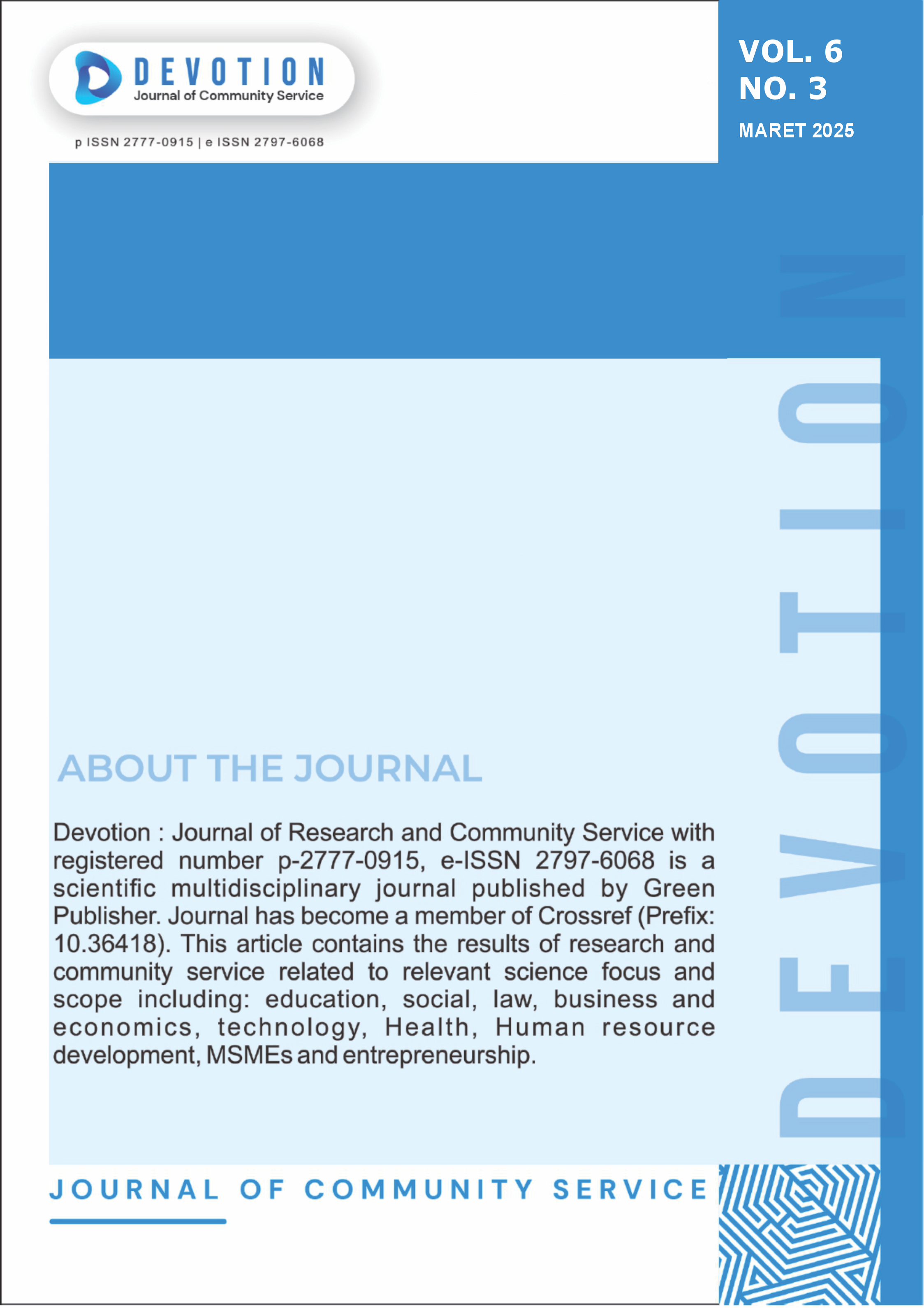Road Surface Assessment of The Kemlagi–Berat Kulon Road Section In Mojokerto District Using The Iri Method
DOI:
https://doi.org/10.59188/devotion.v6i3.25445Abstract
The Kemlagi–Beratkulon road surface assessment in Mojokerto District covers a section of 3.637 km and features a combination of rigid pavement, flexible pavement, and asphalt. This road plays a critical role as a connecting link between Mojokerto District and Gresik District, supporting transportation and regional connectivity. The primary objective of this study is to evaluate the road surface condition, measure the extent of surface damage, and classify the condition using the International Roughness Index (IRI) method. Data collection was conducted through field surveys with the aid of the Roadroid application, providing real-time measurements of road roughness. The findings reveal that the highest e-IRI value recorded was 1.75 at STA 1+900 to STA 2+000, indicating a road condition classified as "GOOD" based on IRI standards. The study highlights the efficiency of the IRI method in assessing road conditions, ensuring accurate identification of surface damage levels ranging from good to severely damaged. Furthermore, the use of the Roadroid application proves effective in facilitating rapid and precise road surface evaluations. To enhance future assessments, this research suggests integrating alternative android-based applications for comparative analyses and conducting surveys during low-traffic periods to minimize data inaccuracies. These findings contribute to the broader understanding of road infrastructure management, emphasizing the importance of regular assessments to optimize maintenance efforts, extend road lifespan, and allocate resources effectively.
Downloads
Published
Issue
Section
License
Copyright (c) 2025 Fikri Jadmiko, Wateno Oetomo, Risma Marleno

This work is licensed under a Creative Commons Attribution-ShareAlike 4.0 International License.
Authors who publish with this journal agree to the following terms:
- Authors retain copyright and grant the journal right of first publication with the work simultaneously licensed under a Creative Commons Attribution-ShareAlike 4.0 International. that allows others to share the work with an acknowledgement of the work's authorship and initial publication in this journal.
- Authors are able to enter into separate, additional contractual arrangements for the non-exclusive distribution of the journal's published version of the work (e.g., post it to an institutional repository or publish it in a book), with an acknowledgement of its initial publication in this journal.
- Authors are permitted and encouraged to post their work online (e.g., in institutional repositories or on their website) prior to and during the submission process, as it can lead to productive exchanges, as well as earlier and greater citation of published work.













